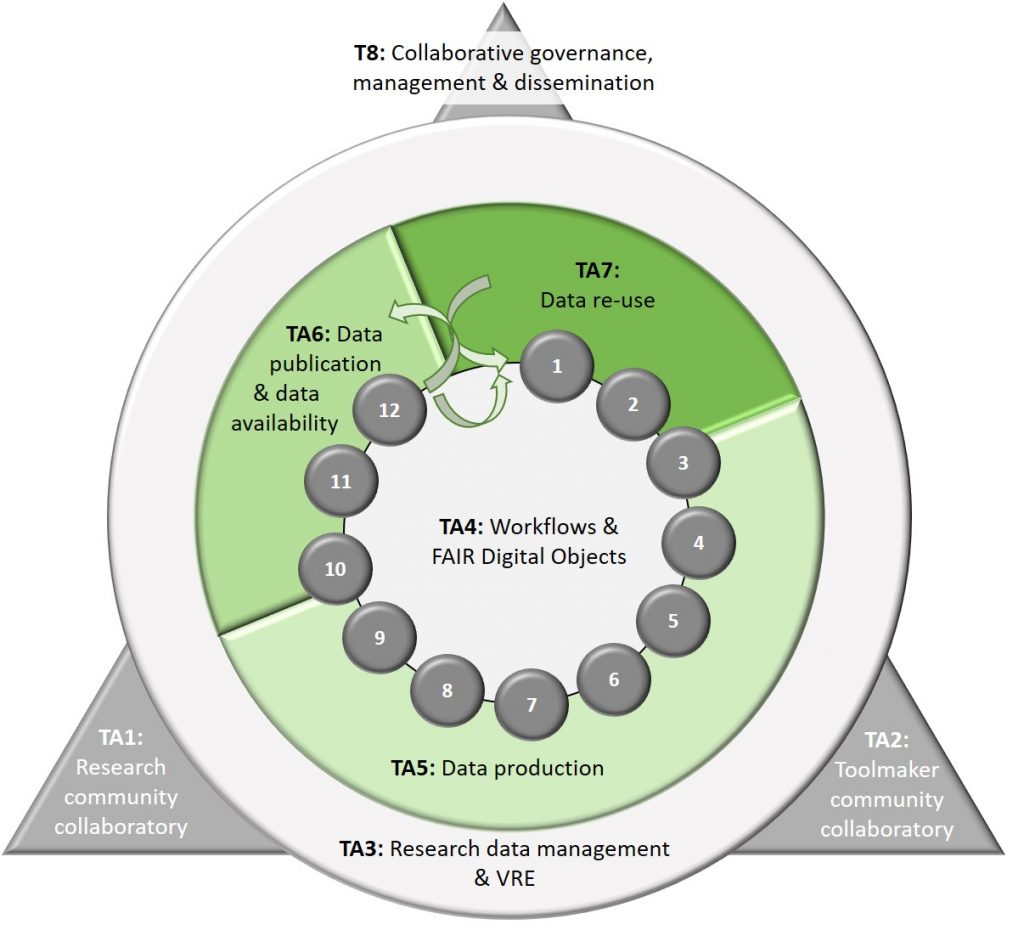The work of the METHODS consortium is organized into eight Task Areas.
| Task Area | Objectives |
|---|---|
| TA1: Research community collaboratory | Establishment of a continuous in- and outflow of information and knowledge between Task Areas, Interest Groups and participating research communities on RDM standards, practices, tools, interfaces and solutions |
| TA2: Toolmaker community collaboratory | Provision of interfaces to enable integrating tools into a FAIR compliant RDM |
| TA3: Research data management and virtual research environments | Maximization of the automation of RDM and other digital research activities across the research lifecycle to facilitate digital activities in human-centric virtual environments |
| TA4: Workflows and FAIR Digital Objects | Application of the FAIR principles to workflows and introduction of FAIR Digital Objects to promote reusable and reproducible research using the Galaxy Framework and RO Crate |
| TA5: Data production | Establishing practical, result-oriented, hands-on collaborations with existing labs and local communities to install FAIR innovation and living best practices |
| TA6: Data publication and data availability | Putting into practice the heterogeneous needs and goals for archiving solutions in terms of both the normative requirements of institutions and scientific societies and the concrete demands of researchers and smaller projects at data-generating places |
| TA7: Data re-use | Making data reusable for multiple purposes by meeting the overarching goal of the FAIR principles |
| TA8: Collaborative governance, management and administration | Ensuring the successful collaboration among the partners and the highest legal and ethical standards to achieve the consortium’s aims |
Interaction of Task Areas
The research community (TA1) and the toolmaker collaboratory (TA2) represent the foundation for work of the other Task Areas, which are organized with regard to the research lifecycle shared among the involved research communities. TA5, TA6 and TA7 form the counterpart to implement widely accepted bottom-up solutions in the existing practices and tools used in sports science, social sciences, psychology, and behavioral economics.
